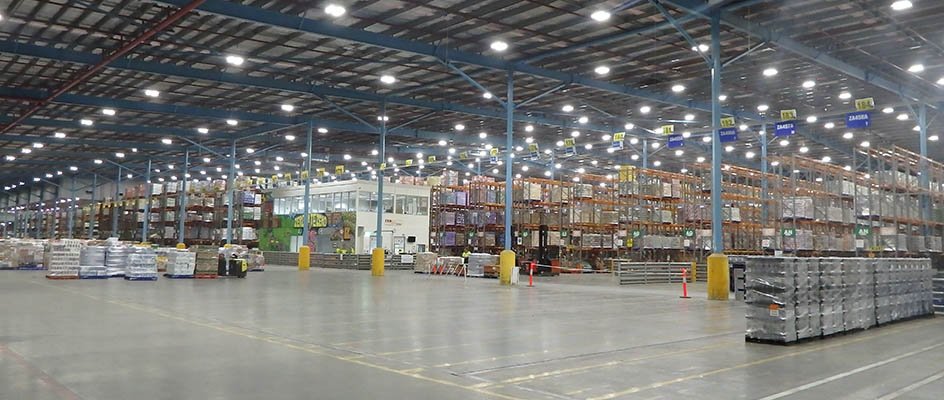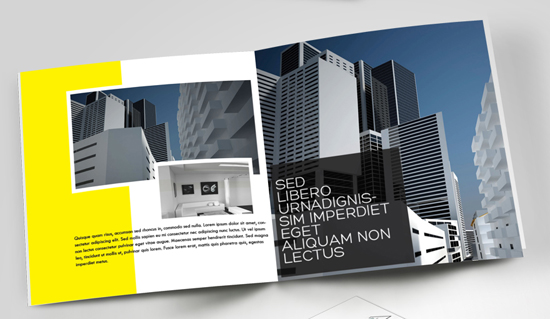
Daylight Sensor and Motion Sensor
Many factories have skylights providing some natural light into the open area and the storage rack area. However, the intensity of natural lighting transmitted into the factory may vary due to weather conditions. High bay lights installed at zones with lower lux requirements (e.g. passage way, storage areas) will not be activated if there is sufficient natural light. For areas with higher lux requirements (e.g. machining, inspection zones), the high bay lights in these areas will be maintained or even ramped up to maintain its lux levels, if the natural light intensity drops. This is achieved by Motion Sensor and detecting the daylight level in that zone.
Similarly, many factories have areas where there is no presence of workers (e.g. storage, goods transit) for a considerable period of time. In this situation,either the high bay lights will not be activated or turned on only to a lower lux level. This is achieved by way of sensing the motion in that zone. If the factory can be carefully zoned as to which zones require what lighting levels and which zones are lowly frequented areas, the inclusion of daylight and motion sensors onto the high bay lights can potentially save up to 80% of lighting energy. However, it must be cautioned that the light fixtures installed now must have the provision for dimming(0-10V or 1-10V) otherwise this high energy saving benefits cannot be derived.
Below is an illustration showing the application of the daylight and motion sensor in a factory open area and storage area.”
When there is enough ambient light (>200lux) coming through the skylight roof, the high bay lights will not be activated by the daylight sensor. The activities in this area goes on and rely on ambient light.
When there is no activities sensed by the motion sensor even the ambient light level falls below 200lux, the main high bay lights will still not be activated. However, a smaller high bay light may be used to keep the main pathway illuminated at 50lux.
But as soon as a motion is detected in the specified zones which may come from a lifting truck or worker’s presence, the main high bay lights in the zones will be activated.
After the lifting truck or workers move away from the area, the sensor will instruct the high bay lights to keep lighting at 100% illumination for a set time period(hold time) before it is dimmed down to a lower illumination level.
The high bay lights will continue to lit at the lower set illumination level for a set time period (standby period) before it completely switches them off.
High Bay Light on Hold-Time
(Sensor available setting: 3 mins, 20 mins, 30 mins)
High Bay Light on Standby Period
Sensor Available Settings:
Standby Time: 5mins, 30mins, or Disable
Standby Dimming Level: 10%/ 20%/ 30%/ 50%
Addition Construction Steps
We will work with all project team members to define the logistical requirements for the construction process, such as areas for deliveries, placement of barricades (if required) and hours of operation. Donec odio. Quisque volutpat mattis eros. Nullam malesuada erat ut turpis. Suspendisse urna nibh, viverra non, semper suscipit, posuere a, pede.
Shop Drawings and Submittals
I am text block. Click edit button to change this text. Lorem ipsum dolor sit amet, consectetur adipiscing elit. Ut elit tellus, luctus nec ullamcorper mattis, pulvinar dapibus leo.
Cost Reporting
I am text block. Click edit button to change this text. Lorem ipsum dolor sit amet, consectetur adipiscing elit. Ut elit tellus, luctus nec ullamcorper mattis, pulvinar dapibus leo.
Final Inspections and Occupancy Permit
I am text block. Click edit button to change this text. Lorem ipsum dolor sit amet, consectetur adipiscing elit. Ut elit tellus, luctus nec ullamcorper mattis, pulvinar dapibus leo.
Service Brochure

An overview of our construction services from Construction Management, Design-build, General Contracting to Small Jobs and Service Work
